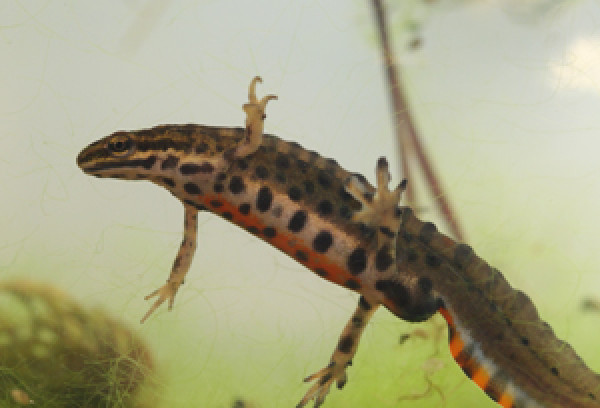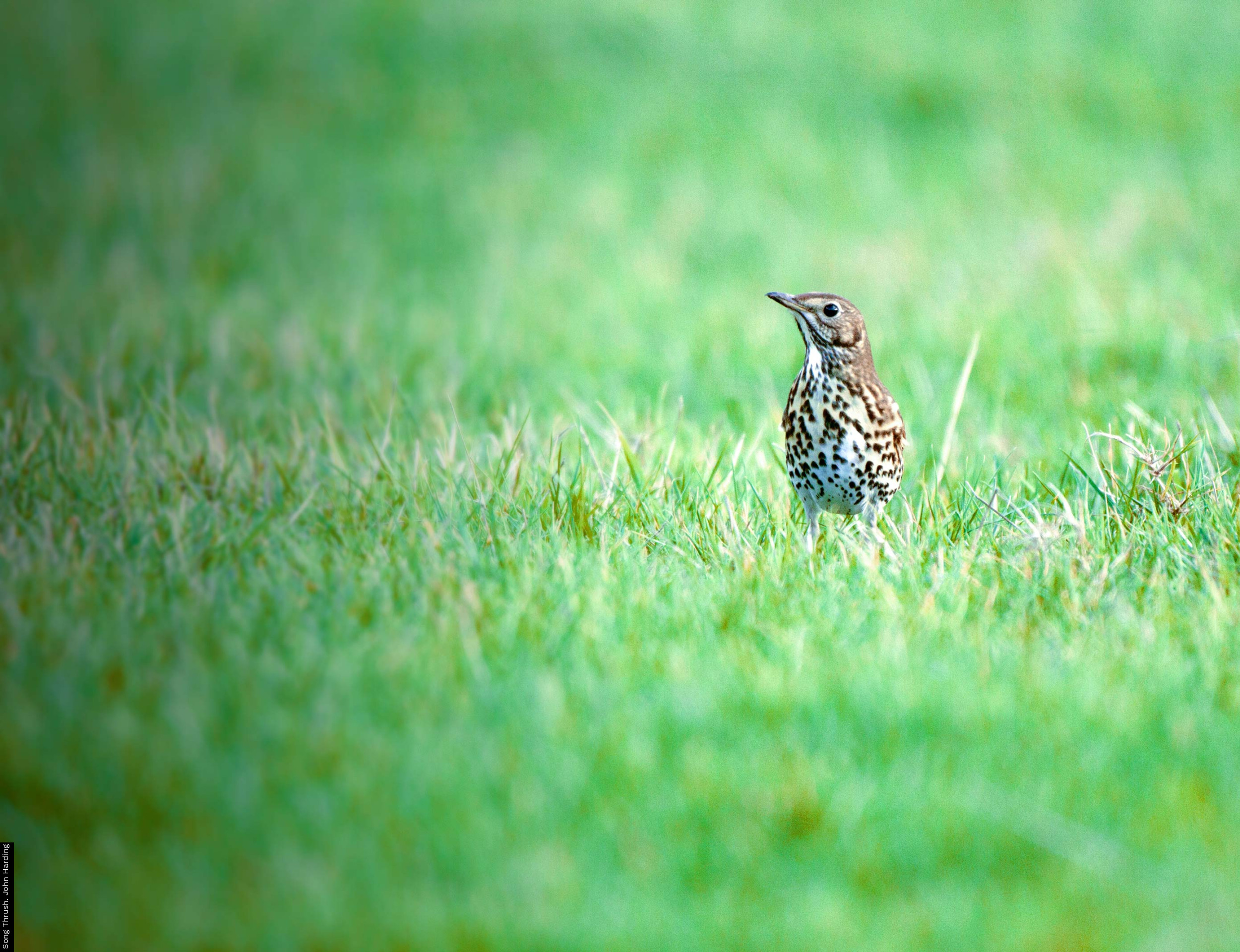Smooth Newt (Common Newt)
Smooth Newt (Common Newt)
Lissotriton vulgaris

The Smooth Newt grows to about 10cm in length and is a dull olive brown colour on the upper surface. The underside is yellow or orange and is speckled with a series of small dark spots of varying size. These spots are also present on the throat (they are absent in the Palmate Newt).
During the breeding season, the male Smooth Newt develops a wavy crest that runs from the back of the head to the tip of the tail. At the same time, he also develops fringes to the edges of his hind toes and while these superficially resemble the webbed hind feet of the male Palmate Newt, they are not as pronounced.
Females Smooth Newts lack the crest, conspicuous colour patterns and fringed toes of the male. However, the females usually show the throat spotting (somewhat reduced) and the presence of throat spots will always distinguish a female Smooth Newt from a female Palmate Newt. The larvae of the two species are very difficult to tell apart.
Although found in waterbodies associated with many different habitats, it is rare in more acidic pools, such as those found in acid heathlands, bogs and mires.
Smooth Newts are mainly taken by fish. However, larger adult Great Crested Newts are also a threat. The larvae are also eaten by larger invertebrates such as water beetles.
Smooth Newts are only protected from trade or sale.
Like all newts, Smooth Newts feed on both terrestrial and aquatic invertebrates including slugs, worms, insect larvae and frog spawn.
The male puts on an elaborate courtship display to attract the female. The female will mate with multiple males, so her eggs will have different fathers. The female will lay between 200 and 300 eggs over the breeding season, attaching them to pond vegetation. The larvae take about 10 weeks to metamorphose into air breathing juveniles.






Share this page